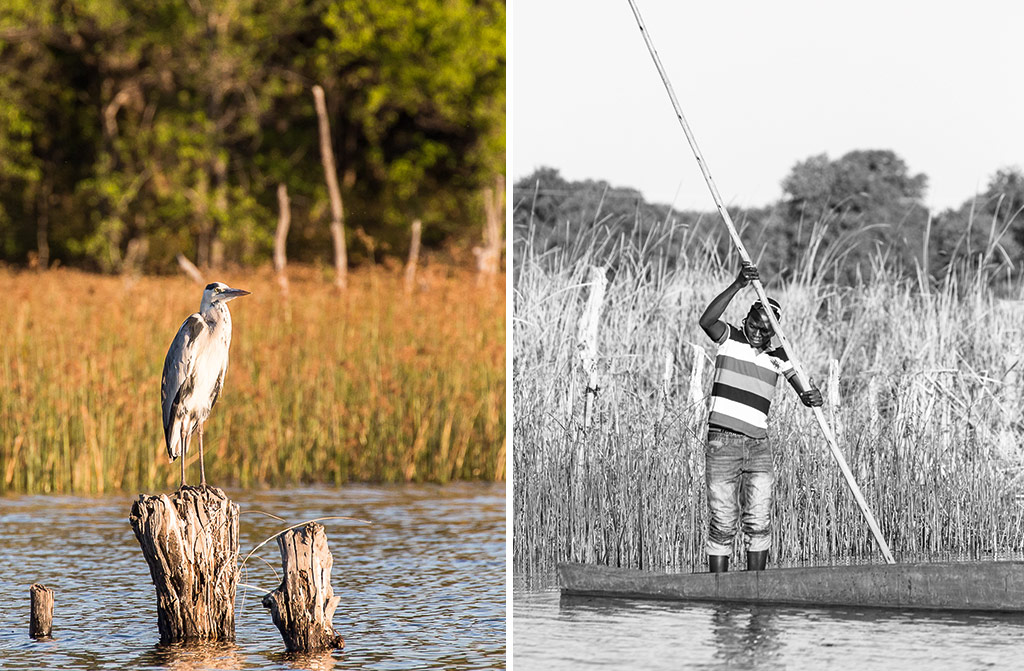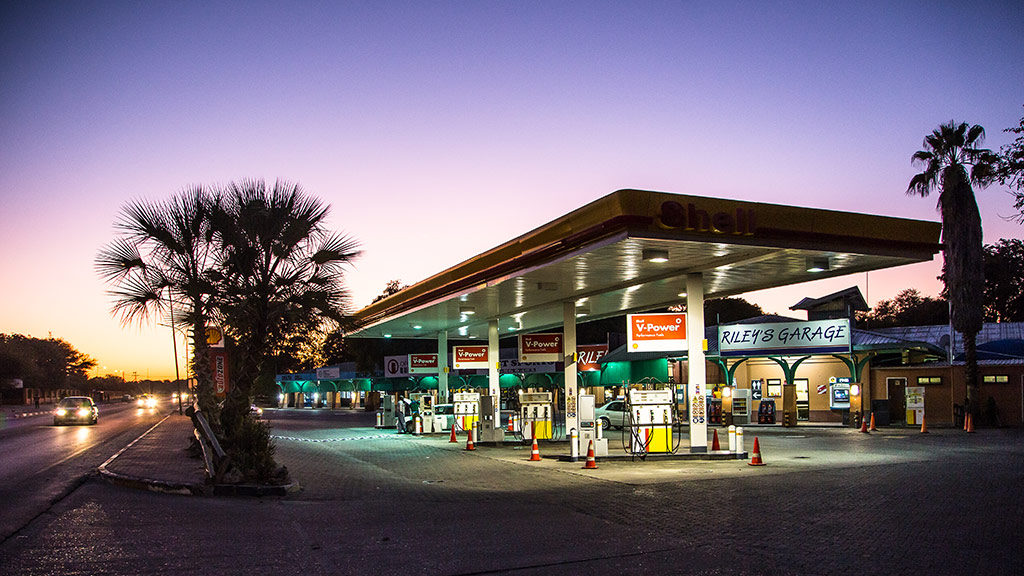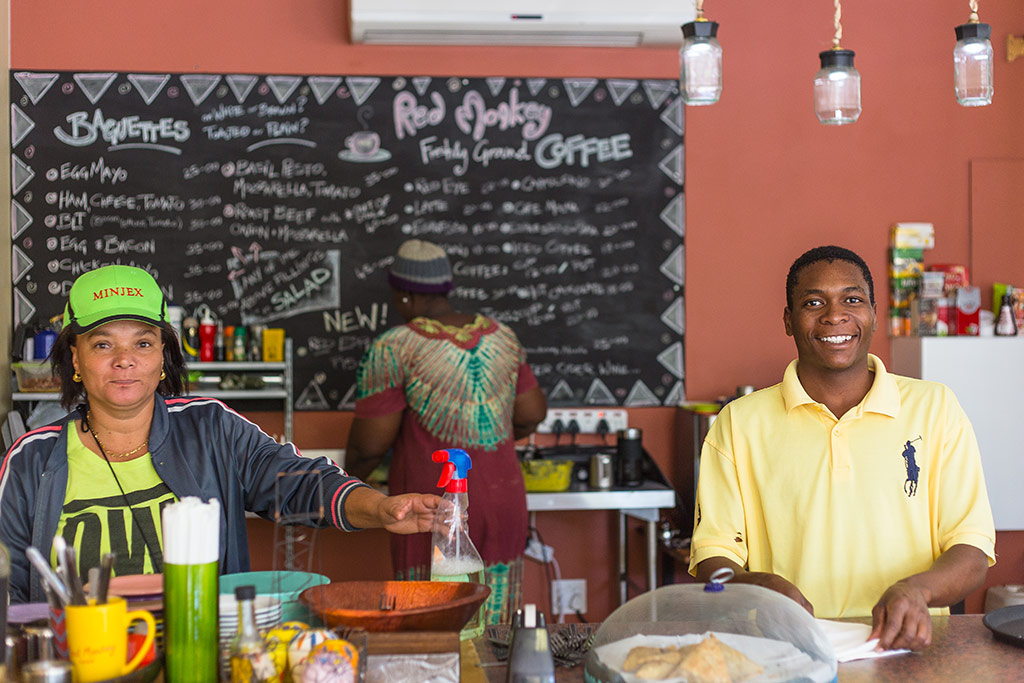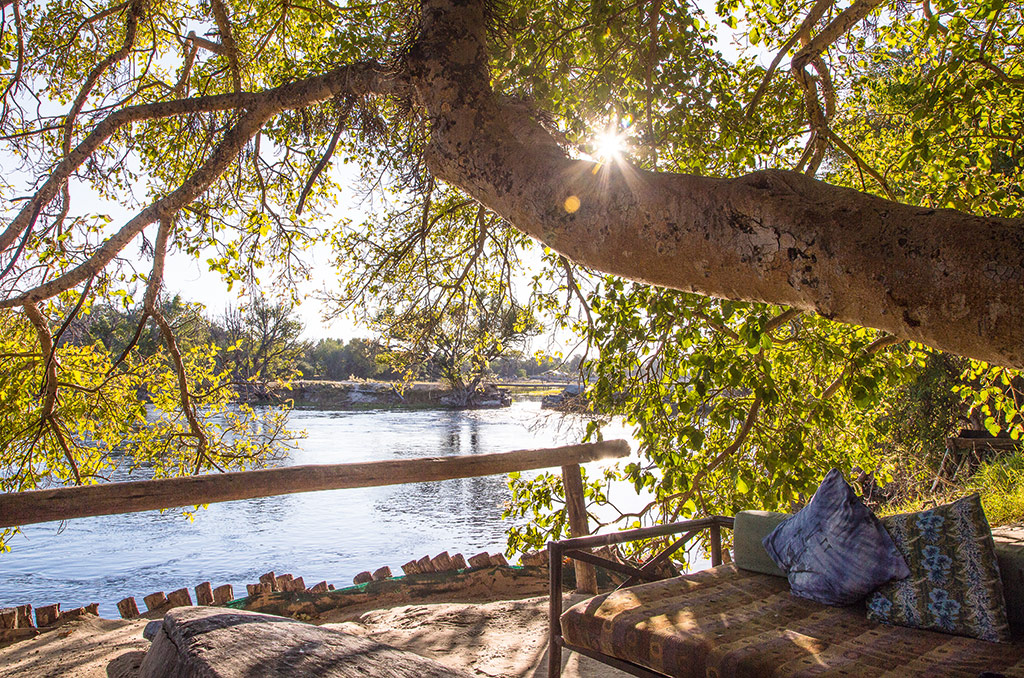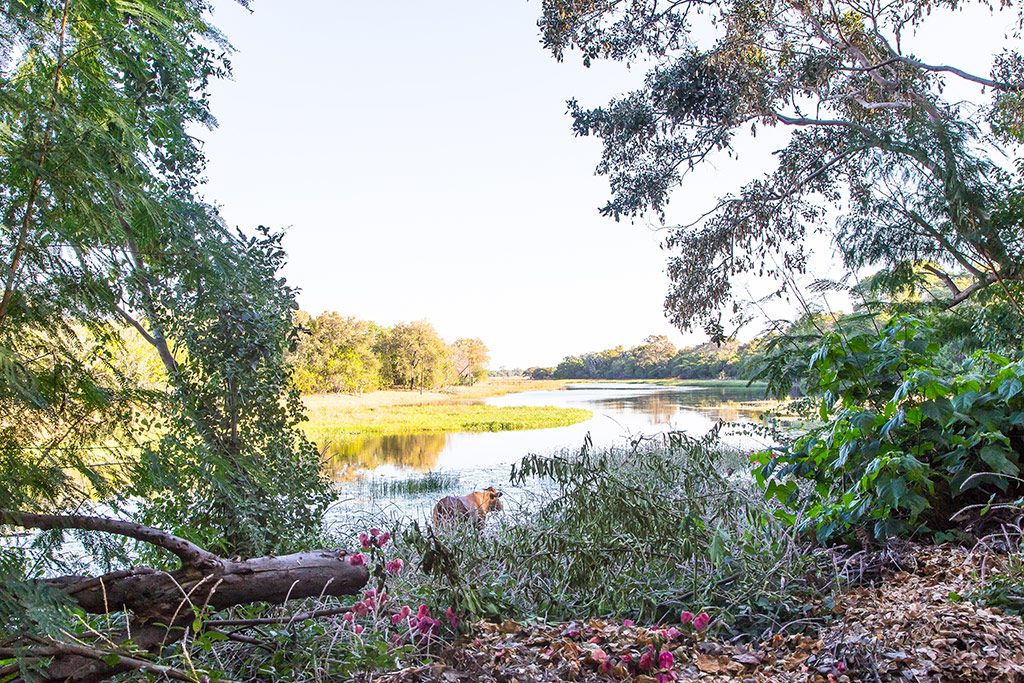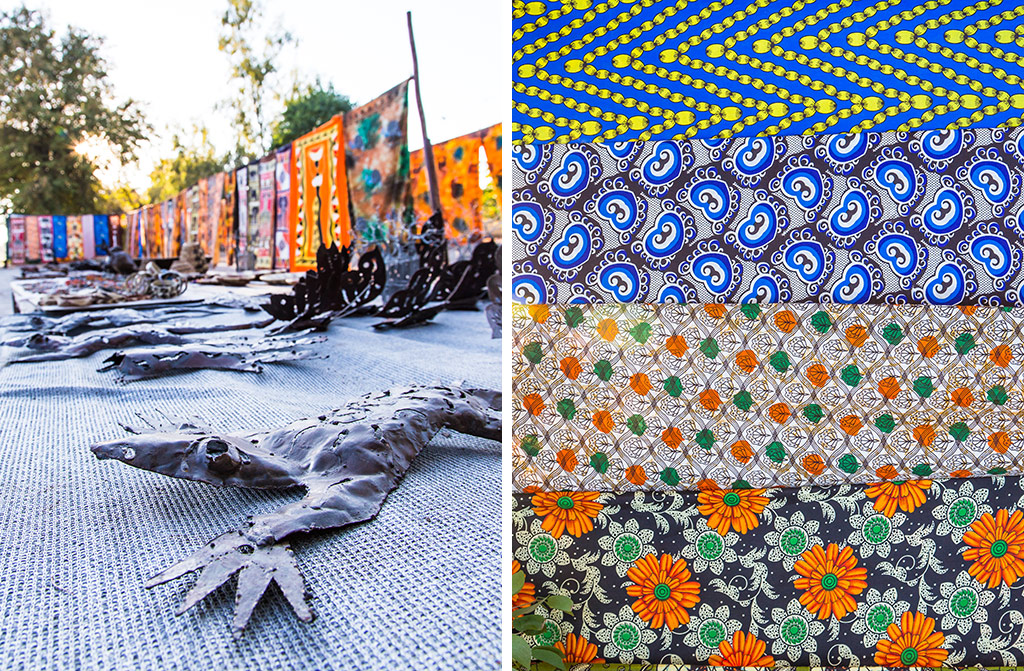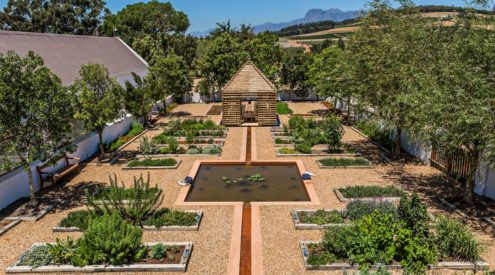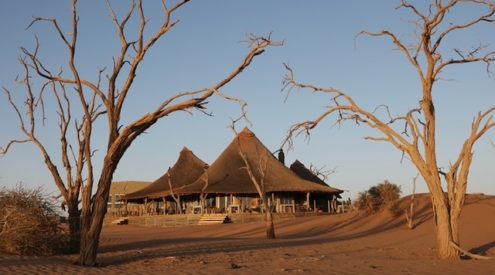Maun is nobody’s final destination in Botswana, right? Yet the locals adore it. Kati Auld found out why it’s worth a longer visit. Photographs by Tyson Jopson.
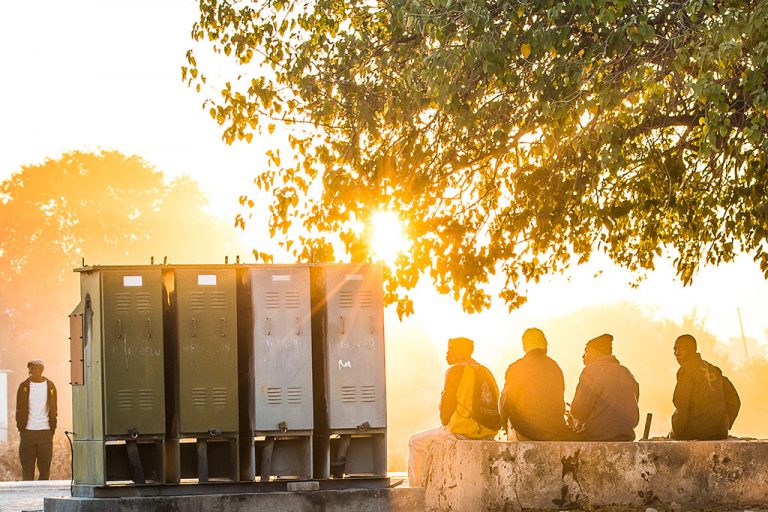
Dust and sunset, as workers wait for lifts home.
‘There’s no two ways about it.’ Tyson Jopson, our deputy editor, looked as deflated as our tyres. ‘We’re going to have to spend another day in Maun.’
We were taking over from colleagues on an assignment through the wilds of Botswana ‒ but admin had to be accomplished first, for our trusty vehicle had already been exploring the bumpy, dusty, mud-pocketed roads for weeks. She needed a service, and a thorough one, before we could career back into the glorious nowhere land of the Delta.
Also read: Flying over the Okavango Delta, in photographs
It’s not often that the first port of call on your adventure is a place that elicits groans, rather than sighs of happiness, but that’s how it is with Maun. There are two reasons travellers find themselves here. Either it’s a petrol/groceries/Wimpy whistle-stop, a necessary inkblot on the otherwise picturesque itinerary, or it’s a place to sit back and kick your heels unhappily until some miscellaneous problem has been solved. Given the choice, many travellers would avoid it, and indeed those that can often do ‒ luxury camps will fly you straight to your riverside G&T. You don’t even have to leave the airport.
And it makes sense. Maun may be many things, but a pretty face it is not. Sprawling, dusty, with faded paint and knock-down structures, it can be hard to tell a lodge from a building site. Pregnant dogs wander past unpainted cinder blocks, and roads are lined by dusty lots studded with bright textiles fluttering on lines. The only things here that shine are the handmade tin cowbells for sale.
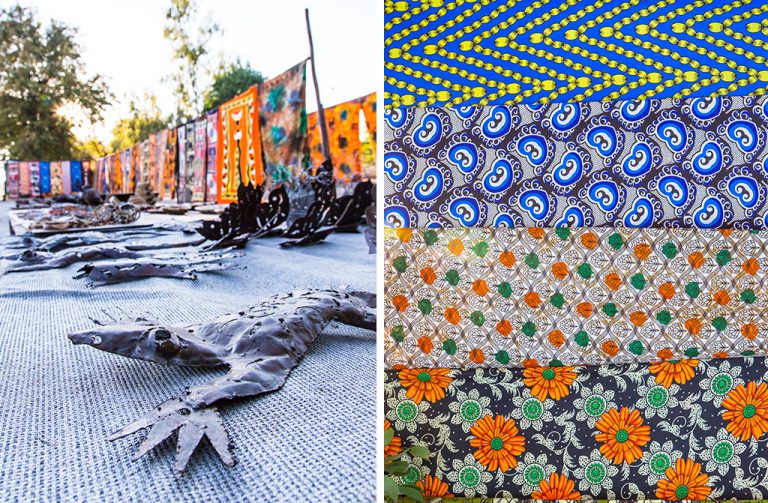
Textiles and crafts line the roads.
Even in the midst of this you’ll hear laments about how over-developed Maun has become ‒ stay in town long enough and you’ll find stories from the Good Old Days crawl from the woodwork of every bar. If you take the old-timers’ word for it, it was the Wild West ‒ except with vellies instead of cowboy boots. The lore includes everything you’d expect from a traditional outpost ‒ guides boasting about wild animal encounters, dust-crazed folks stumbling towards their first whisky after weeks in the bush, the rough-and-tumble electric energy of a place constantly skirting chaos. Much of the ye-olde-cowboy charm has faded in its rise to the administrative centre of the Delta, but the sense of it being a last-chance saloon, a crossroads between civilisation and wilderness, remains.
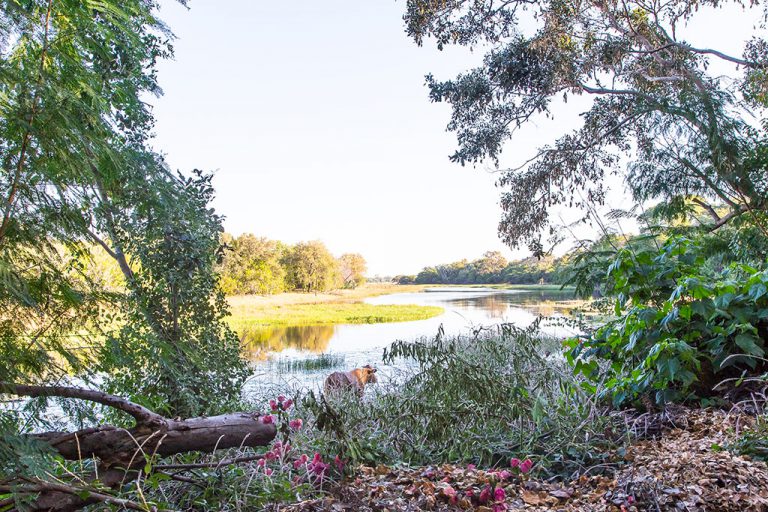
The sites at Maun Rest Camp are lovely, and ringed with bougainvillea.
So, what do you do at a crossroads? You wait, and you make a deal. In Maun, that deal is about loosening up and learning to enjoy the little things. You probably won’t find yourself with miraculously blistering blues skills, but you may still see something that you can’t explain to your friends back home.
A few hours of aimless wandering brought me to the Island Safari Lodge, where serendipity took over. I found myself skimming along the Thamalakane in a speedboat with six locals, who’d decided that a last-minute sunset cruise was in order. Castle Lites were passed around, wildlife was being (brusquely) observed, and the rosy light tickling the reeds was as archetypically Okavango as you could hope for.
‘You know, I’ve seen the world,’ Lawrence, a local, tells me. ‘I’ve been to New York, China, India. And I’d still choose Maun, every time. It’s the perfect balance between city life and village life.’
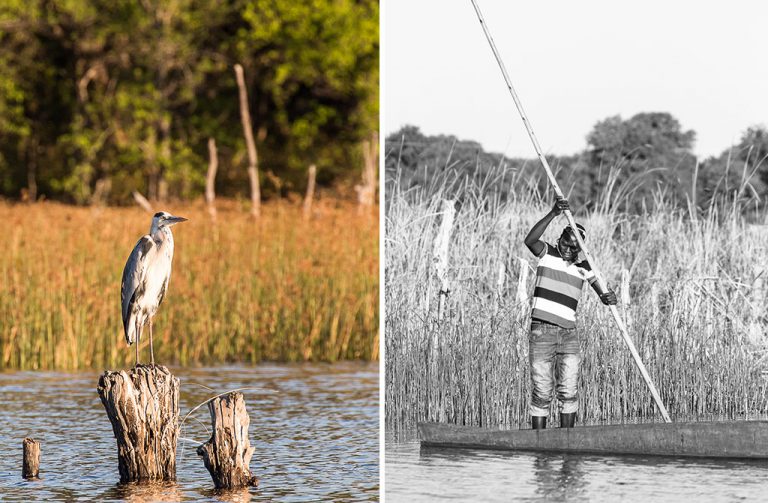
Left: A grey heron takes in the sun. Right: fishermen in mekoro in the reed-lined Thamalakane River.
I was shocked. But the way Lawrence tells it, I just don’t love the Okavango as much as he does. I met people who’d moved here from everywhere: folks from Gaborone, folks from tiny rural villages. They had come here for the Delta: whether it’s their souls or their pockets that need filling, Maun is where they end up.
Tammy is another of these people. I met her at a karaoke show, where she’s belting out a country song in Daisy Dukes and a checked shirt. As a journalist, I stick out like a sore thumb: it’s an everyone-knows-everyone kind of place, especially at the intersection between the tourist industry and amateur cabaret enthusiasts.
Tammy and I get chatting: she is a pilot, as is her husband. They moved here for work ‒ that is, once they’d found a company that agreed that a female pilot was not inherently a death sentence. She told me that she did have her qualms about bringing up kids in such a small town. But when she realised that her four-year old had memorised the entire Roberts birding app on her iPad, she figured they’d do just fine.
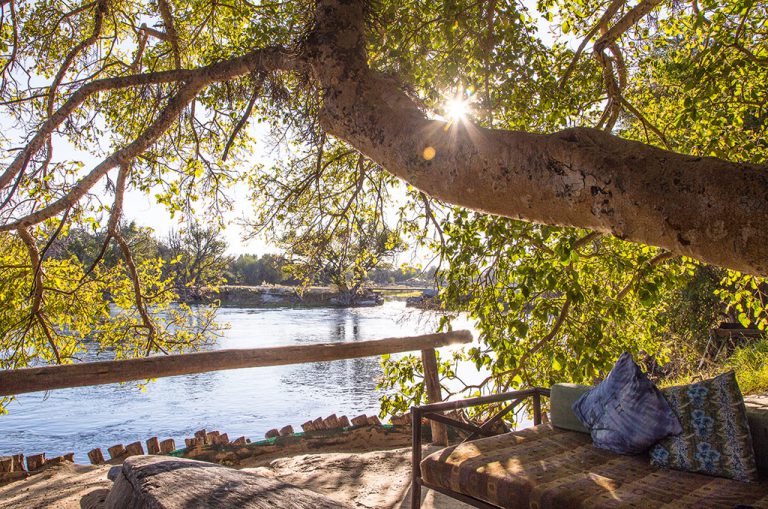
The view from Old Bridge Backpackers is quite impressive.
That’s the thing: Maun is the closest place to the Delta that has something even vaguely resembling a buzz. It’s Okavango-Lite, wilderness with a Woolies. For Maun locals, a trip into the Delta is like a weekend hike for Capetonians. Imagine paying your rent, going for a run, fighting with your partner about who should buy groceries, and all with the mighty Delta on the horizon.
The same infrastructure that distinguishes Maun from the rest of the Delta is what makes it attractive to locals ‒ and has a magnetic push-pull effect on travellers. By the time our car is ready for the open road, I certainly was too ‒ but I’ll definitely be returning. It’s a strange kind of magic that way.
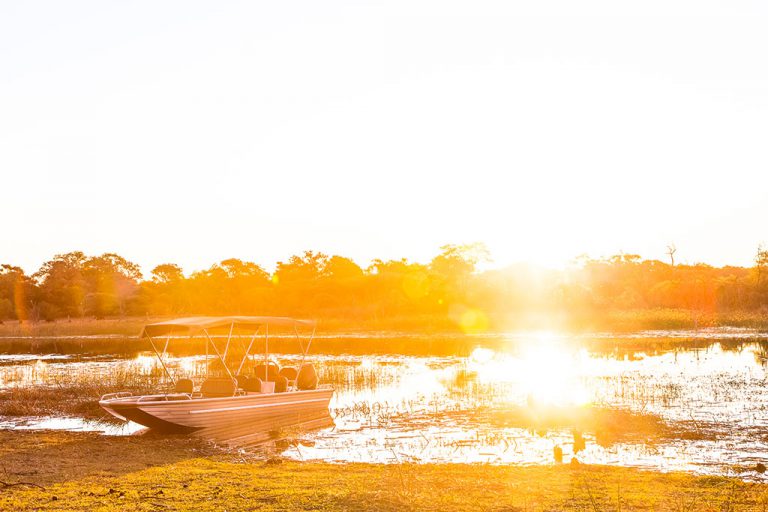
Sunset at Audi Camp.
Plan your trip to Maun
Air Botswana flies direct from both Joburg and Cape Town to Maun for about R4700 and R7500 return, respectively. If you’re driving, take the N1 from Joburg towards Pretoria and turn off onto the R33 towards Modimolle. Cross the border at Martin’s Drift and continue on the A14 and A3 to Maun.
Things you need to know
There’s a lot of livestock on the roads. Cows and dogs tend to look both ways before crossing ‒ but the donkeys obey only their whims and do not stop for love or money. They always have right of way.
A surprisingly large number of establishments have free Wi-Fi, and they tend to be generous with it. If you can’t find the password, try 12345.
Park and campsite fees should be paid here in Maun, if you haven’t settled them online. Botswana Department of Wildlife and National Parks controls the park fees and several campsites, although there are also private operators within the parks ‒ Xomae, SKL Group and Kwalate Safaris (in the Ngami Centre) are the biggest of them. It’s best to book your campsites before you leave SA, but you’ll need to pay for them at their respective offices in Maun. You can pay most park entrance fees at the gate but make sure to have cash, as card machines are scarce and unreliable. For more information, read our blog about booking campsites in Botswana’s National Parks.
The Choppies and Spar in the middle of Maun are the best places to stock up on food (note: Spar closes at 3pm on Sundays). Head up to Beef Boys on Tsheko Tsheko Road for the best meat in town. Tel +2676864771.
Riley’s Garage is the place to triple check your vehicle and fill up with fuel and water (it has a hosepipe and the water is drinkable). There’s also an auto shop for spares and safety equipment. Tel +2676860203.
Kavango Engineering is where you should go for more major repairs. Its welding is solid and reasonably priced. Tel +26772634392.
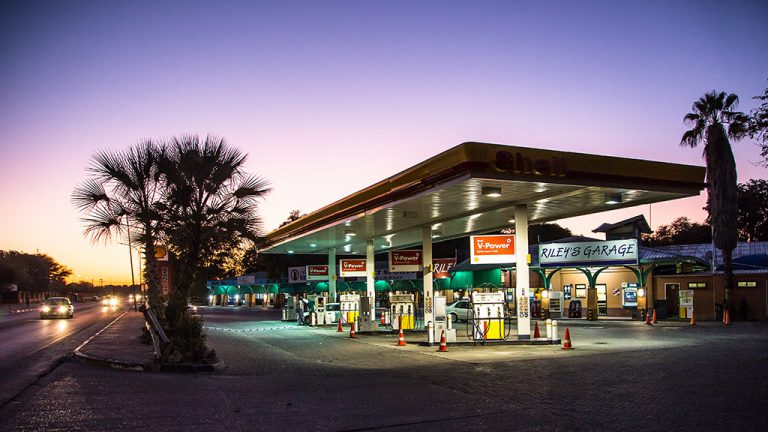
Riley’s garage is the place is triple-check your vehicle before leaving town.
Things to do in Maun
Go for a sunset cruise on the Thamalakane River. Most accommodation options will be able to organise one, but the higher upstream you are, the closer you’ll get to the Okavango in your allotted hour. We went with Island Safari Lodge for R240 per person. Tel 0218550395.
Fly over the Delta with Air Shakawe because there’s no better way to comprehend the beauty of the Okavango than from the air. From R1572 per person. Tel +2676863620.
Accommodation in Maun
Jump Street Chalets is about three kilometres from town, at the end of a navigable (but long) sand road. Once you get there, though, it’s a little oasis from the dust with a small pool and an on-site restaurant. From R710 for a standard thatched chalet with aircon (sleeps two). Tel +2676864688.
Motsebe Backpackers is new, having only opened last year ‒ but the view from the campsite couldn’t be better, as you park your tent on the lawns right next to the riverbank. They also have double tented rooms, which are decent at R250 per person sharing. Tel +2676860803.
Maun Rest Camp is a satellite site of The Old Bridge Backpackers, and looks at its sister site across the river. The lack of a bar means that this is the quiet side ‒ and the spots are bigger, with tall shady trees and lots of bougainvillea. Campsite 1 has the best views. Riverside camping is R130 per person (adults), R65 per person (ages three to 11) and free for kids of two and below. A power point is R51 per night. Tel +2676862623.
Maun Lodge is a more luxe option. Ask for a river room, which has probably the best summary of Maun ‒ decent view of the river, but right next to the highway. From R1388 for two sharing. Tel +2676863939.
Best places to eat and drink in Maun
The Red Monkey on Airport Road is a nice spot for snacks or tramezzini in an Afro-rustic café, with striped kikois as tablecloths and a craft section in the corner. Free Wi-Fi. Tel +2676800736.
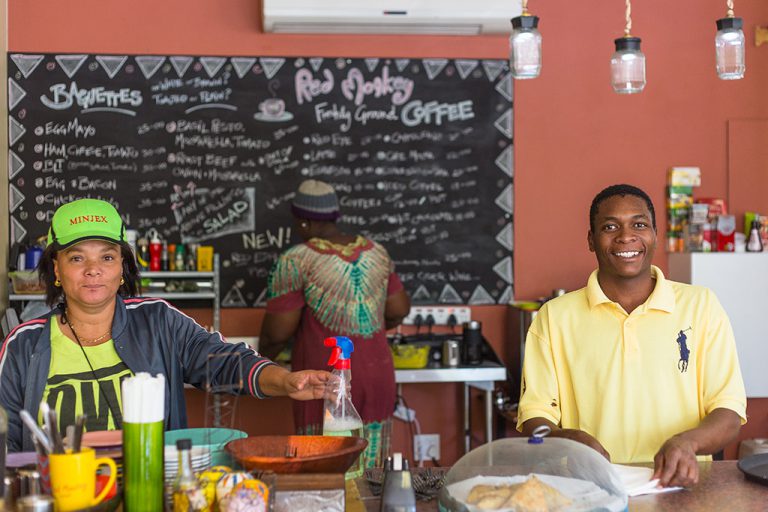
Smiling baristas at Red Monkey Cafe.
French Connection is run by an enigmatic chef who’s taken it upon himself to bring fine cuisine to Maun. Here you’ll find a menu populated by French onion soup, rabbit provençale, and other delightful bits. It also does pre-packaged gourmet meals, that you can pop in your freezer for a taste of Provence on the road. Tel +2676800625.
The Old Bridge Backpackers is a favourite with locals as well as travellers. Its bar is lovely ‒ sit on the long couches under the big tree, watching pied kingfishers hunt. The chicken stew with pap comes recommended and costs R72 for a portion. Tel +2676862406.
The Sedia Riverside Hotel is the place to go if you’ve come back from the Delta dusty and filthy and want the experience of someone else refilling your wine glass. The oxtail looked good, and the restaurant does a decent pizza for R85. There’s also a pool in front of the bar. Tel +26771237478.
This article was first published in the March 2016 issue of Getaway magazine.
Prices have been included as a rough estimate, and may have changed since publication. Please confirm before booking.











